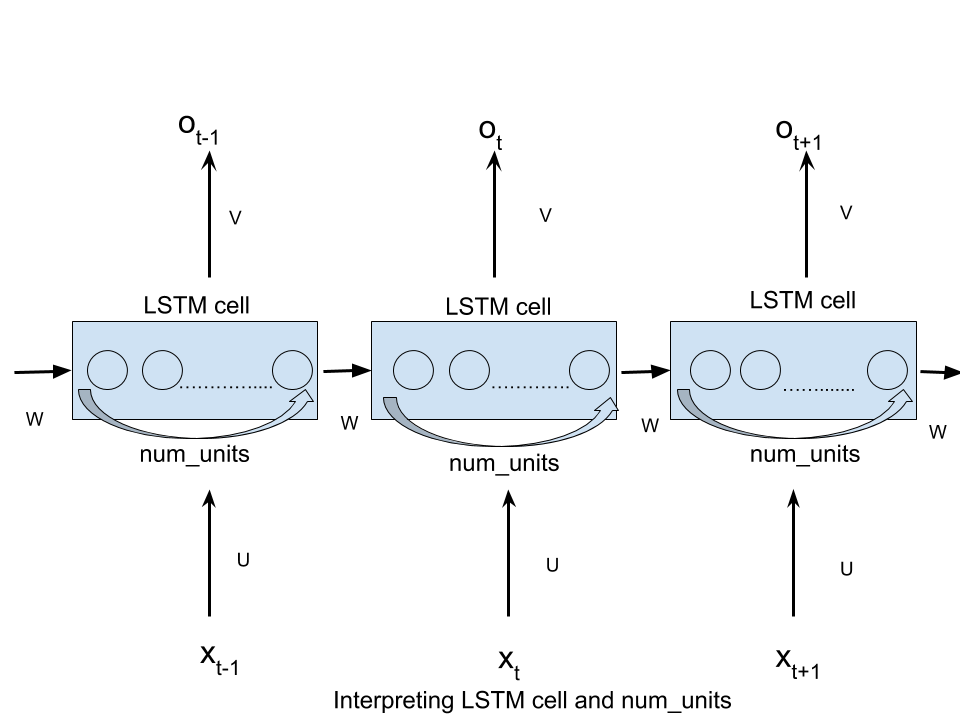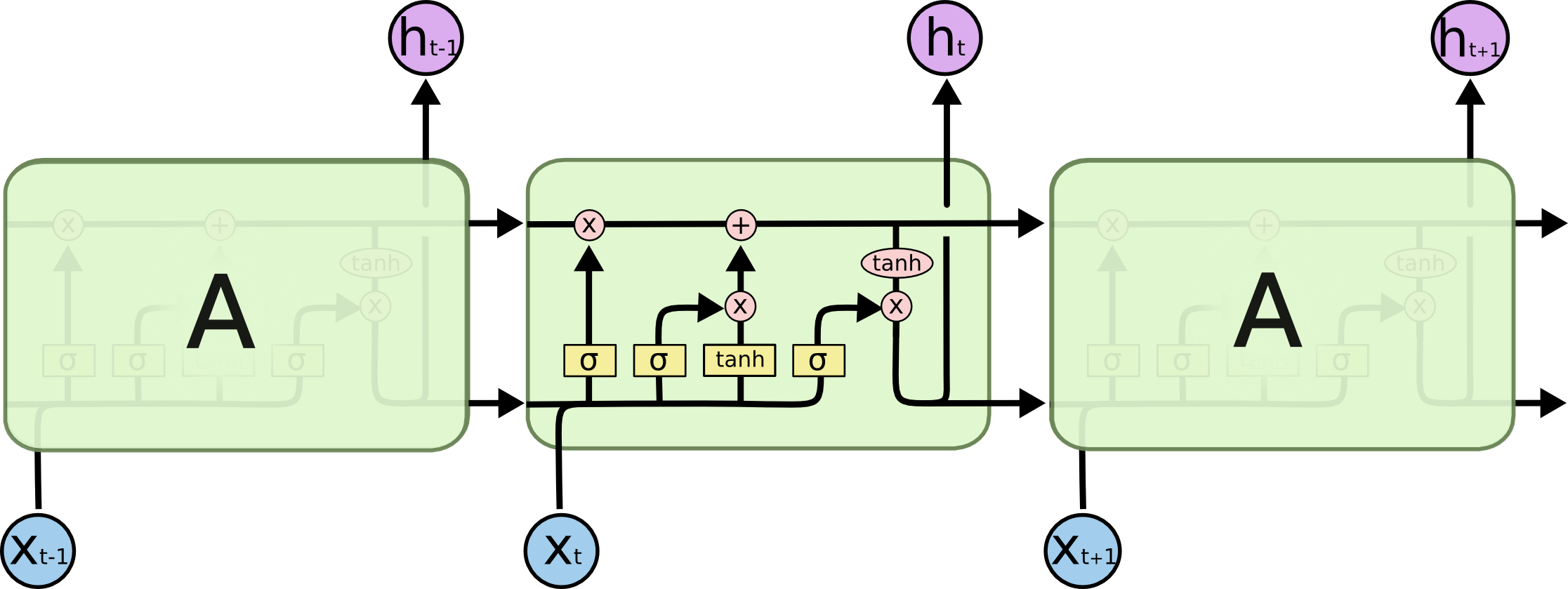RNN
关于RNN的文章,colah的blog这篇文章讲得很详细。从基本的RNN到LSTM以及各种变种。

不过关于RNN里num_units的含义,weight参数的数量计算,没具体提到。
首先来看下Tensorflow里RNN的实现。
@tf_export("nn.rnn_cell.BasicRNNCell")
class BasicRNNCell(LayerRNNCell):
"""The most basic RNN cell.
Args:
num_units: int, The number of units in the RNN cell.
activation: Nonlinearity to use. Default: `tanh`.
reuse: (optional) Python boolean describing whether to reuse variables
in an existing scope. If not `True`, and the existing scope already has
the given variables, an error is raised.
name: String, the name of the layer. Layers with the same name will
share weights, but to avoid mistakes we require reuse=True in such
cases.
dtype: Default dtype of the layer (default of `None` means use the type
of the first input). Required when `build` is called before `call`.
"""
def __init__(self,
num_units,
activation=None,
reuse=None,
name=None,
dtype=None):
super(BasicRNNCell, self).__init__(_reuse=reuse, name=name, dtype=dtype)
# Inputs must be 2-dimensional.
self.input_spec = base_layer.InputSpec(ndim=2)
self._num_units = num_units
self._activation = activation or math_ops.tanh
@property
def state_size(self):
return self._num_units
@property
def output_size(self):
return self._num_units
def build(self, inputs_shape):
if inputs_shape[1].value is None:
raise ValueError("Expected inputs.shape[-1] to be known, saw shape: %s"
% inputs_shape)
input_depth = inputs_shape[1].value
self._kernel = self.add_variable(
_WEIGHTS_VARIABLE_NAME,
shape=[input_depth + self._num_units, self._num_units])
self._bias = self.add_variable(
_BIAS_VARIABLE_NAME,
shape=[self._num_units],
initializer=init_ops.zeros_initializer(dtype=self.dtype))
self.built = True
def call(self, inputs, state):
"""Most basic RNN: output = new_state = act(W * input + U * state + B)."""
gate_inputs = math_ops.matmul(
array_ops.concat([inputs, state], 1), self._kernel)
gate_inputs = nn_ops.bias_add(gate_inputs, self._bias)
output = self._activation(gate_inputs)
return output, output
这里weight大小为(input_depth+ _num_units)*_num_units
shape=[input_depth + self._num_units, self._num_units]
假设X的大小为[T,10],每个时序t对应的Xt:[1,10], input_depth=10
input_depth:也就是上图中Xt的输入大小。那么_num_units上图中没有体现出来,再看下图。

这里相当于把上图展开看,里面藏着_num_units个隐藏单元。 那么相应的weight数量:_num_units* input_depth,再加上上一次t-1输出的hidden state。大小为_num_units;
weight=(input_depth+ _num_units)*_num_units
bias=_num_units
类似的LSTM
@tf_export("nn.rnn_cell.BasicLSTMCell")
class BasicLSTMCell(LayerRNNCell):
...
def build(self, inputs_shape):
if inputs_shape[1].value is None:
raise ValueError("Expected inputs.shape[-1] to be known, saw shape: %s"
% inputs_shape)
input_depth = inputs_shape[1].value
h_depth = self._num_units
self._kernel = self.add_variable(
_WEIGHTS_VARIABLE_NAME,
shape=[input_depth + h_depth, 4 * self._num_units])
self._bias = self.add_variable(
_BIAS_VARIABLE_NAME,
shape=[4 * self._num_units],
initializer=init_ops.zeros_initializer(dtype=self.dtype))
self.built = True
...
LSTM的参数数量,RNN的基础上再乘以4,也就是3个门以及tanh layer。

参考
1、https://github.com/tensorflow/
2、https://colah.github.io/posts/2015-08-Understanding-LSTMs/
3、https://www.quora.com/What-is-the-meaning-of-%E2%80%9CThe-number-of-units-in-the-LSTM-cell
4、https://www.knowledgemapper.com/knowmap/knowbook/[email protected](MNISTdataset)
5、https://stackoverflow.com/questions/37901047/what-is-num-units-in-tensorflow-basiclstmcell